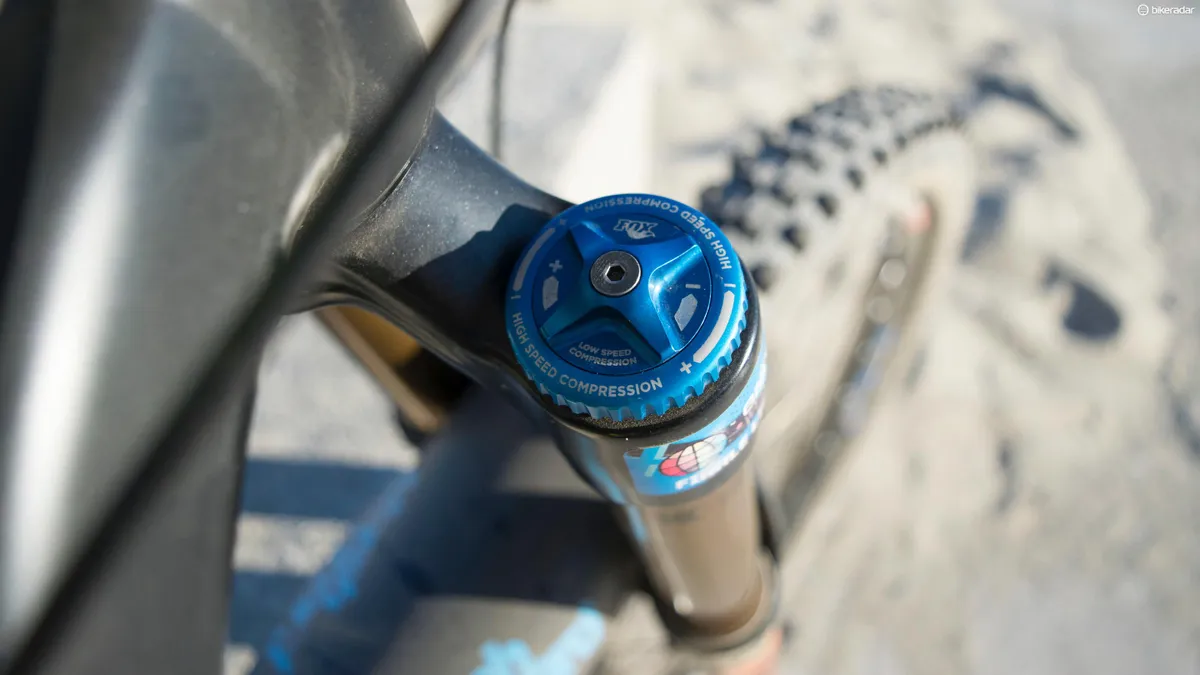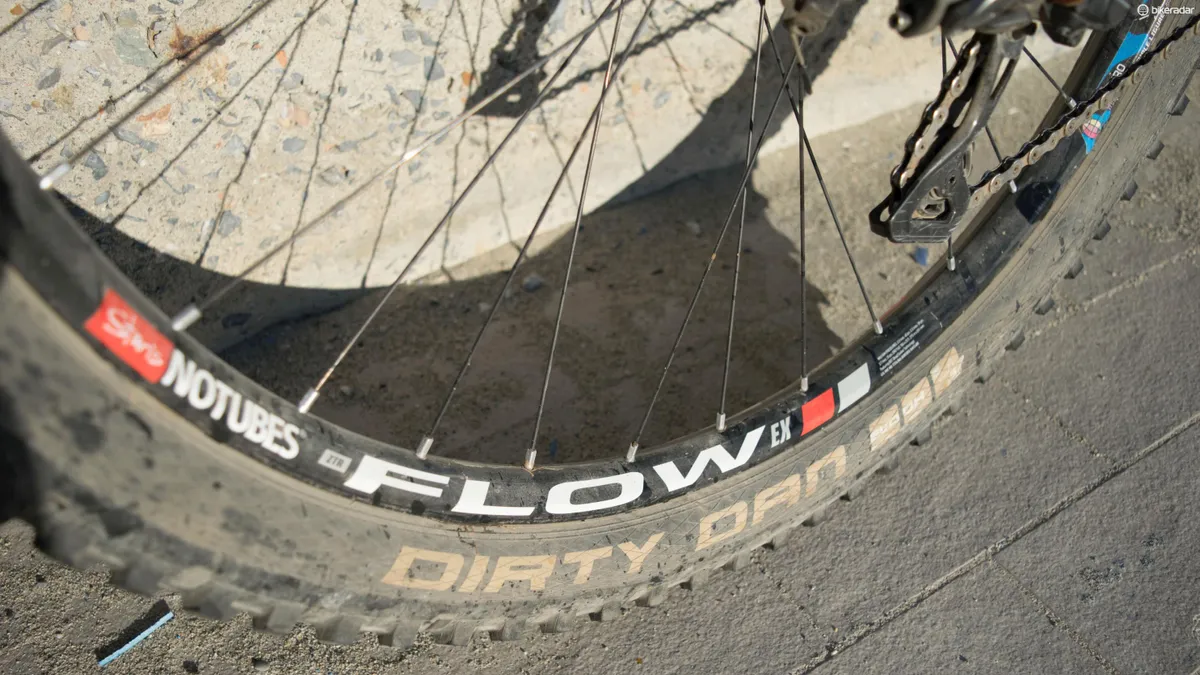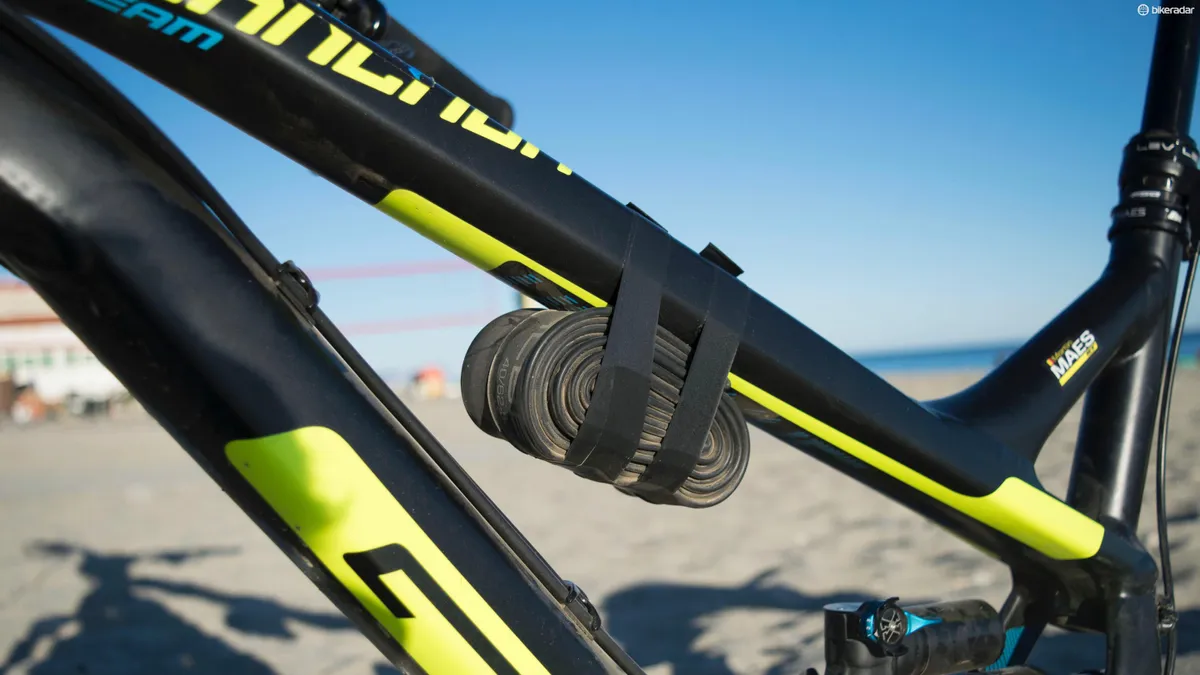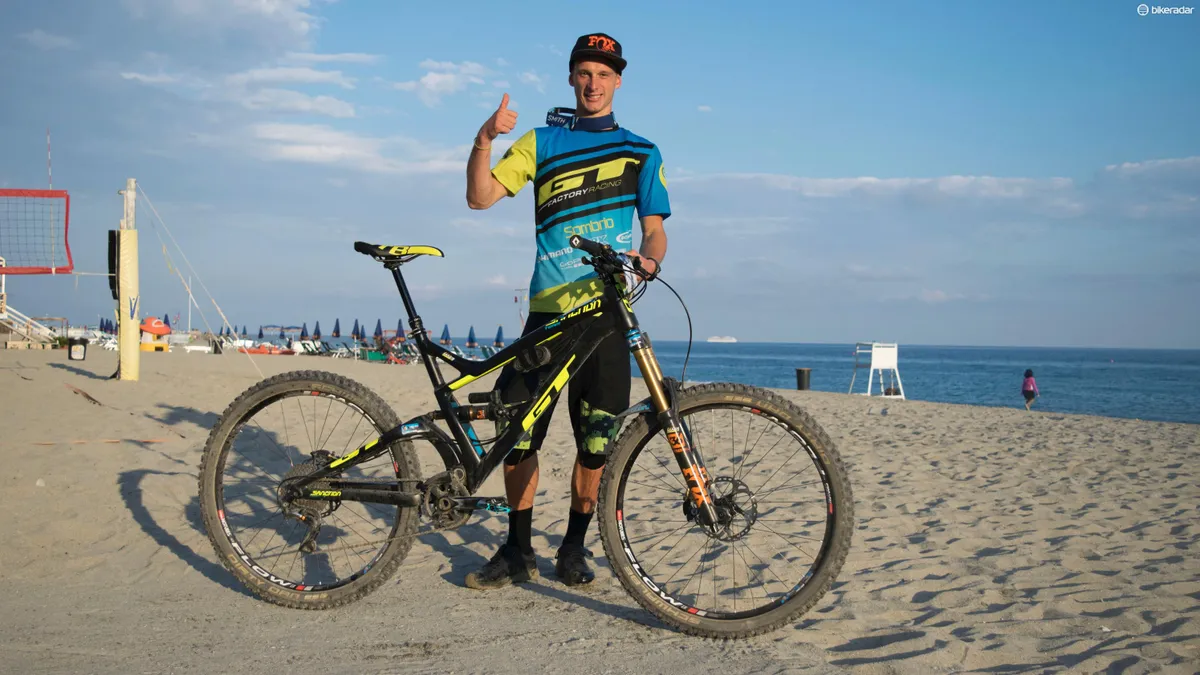In a way, it seems ridiculous that it’s taken this long for Martin Maes to win a round of the Enduro World Series. He’s had the pace for a long time and has come close more than once; and yet, quite unbelievably, he’s still only 19 years old. He’s not even officially old enough to compete in the senior field. But he chose to anyway, and that decision payed off here in Finale Ligure, as the young Belgian took the win in style at the final round of the 2016 season.
- Rachel Atherton's 9 tips for a great race season
- Danny Hart’s World Championship winning Mondraker Summum
Straight after the race, we caught up with Martin and his team-manager/mechanic, Mark Morrison. He gave us the juicy details on the bike Martin rode to victory.
The frame
At around 186cm tall (Mark estimates), Martin rides a size-large GT Sanction. It’s totally stock, with a standard FSA headset, and no offset shock bushings. With a 170mm travel Fox 36 fork, we measured the head angle at a tick under 66 degrees. So far, so normal.
Suspension
Martin was running a Fox Float X rear shock, which is apparently what he uses all the time. We asked if he’s experimented with Fox’s Float or coil X2 shocks, but according to Mark: “there’s a good feeling with this shock, and it’s got lockout for the climbs too.”

As for suspension setup, Martin is running 200Psi in the shock, with 73Psi in the fork. The off-the-shelf shock (no custom tuned damper here) was set to its lightest compression setting when we checked the bike over, while the fork’s Low-speed compression was set 16 clicks from closed (8 from fully open), and the High speed compression was set up pretty light at 18 clicks from closed (4 from fully open).
Mark was coy about revealing how many volume spacers were fitted, but we had a quick bounce on the bike and found the fork was decidedly on the progressive side. We’d guess at least two of Fox’s orange volume spacers were fitted. We also noticed the rebound speed was moderate, neither particularly fast or slow, and was extremely well-balanced front to rear.
Tyres
While many EWS racers chose fast-rolling rear tyres for the pedally stages on the second day of the race, Martin chose to run cut-down mud spikes. The Schwalbe Dirty Dan’s outermost knobs have been removed completely, while the rest of the tread is trimmed to suit the course – flatter tracks get shorter tread for less rolling resistance.

These tyres use Schwalbe’s stickiest ‘Vertstar’ rubber mix with a full-fat DH casing, which is even beefier than its popular ‘Supergravity’ tyres. Mark explains: “we need all the protection we can get with Martin!” Despite this, Mark claims that once he’s cut them down they actually roll faster than a stock Magic Mary (Schwalbe’s popular mixed-conditions tyre). We asked him if they’d tried a cut-down Magic Mary, but apparently Maes prefers the feel of the narrower Dirty Dan.
Tyre pressures are set to 24psi in the front and 26psi in the rear, which apparently doesn’t change much from race to race.
Wheels
According to Mark, Martin uses Stan’s alloy Flow EX rims 90% of the time. They have experimented with using the brand’s lighter Bravo carbon hoops, most often on the front, but feel that an Aluminium rim is more likely to survive a race, albeit with the occasional dent.
Mark explains that when building wheels for Martin, he keeps the spoke tension on the lighter side. This is to provide more compliance and comfort from the wheel whilst also allowing it to deform under impact, which he says reduces the risk of breaking a wheel.

The tyres are setup “straightforward tubeless” (no Procore or other in-tyre tricks). Mark revealed that the rims are built up with “secret layers of tape to hold the tyre very very tight on the rim and give a very low rim-edge so it’s hard to puncture by snake bite.”
Cockpit
A 50mm Raceface Atas stem is paired with a 780mm Raceface SixC bar, which measures up at closer to 790mm when shod with ODI Elite Motion grips.

The bar uses the 35mm clamp diameter, which apparently keeps things stiff enough for Maes near the stem, while still allowing enough compliance towards the ends. Combined with a generous 20mm of spacers under the stem, the 20mm rise bar results in a fairly high bar for a rider of Maritn’s height, at 1055mm measured from the ground.
The details
We spotted that Martin’s CrankBrothers Mallet E pedals use the longer than standard axles, offering extra clearance from the crank. He uses 170mm Shimano XTR crank arms, with a 34 tooth chainring and a standard 11-44 tooth XTR cassette. No need for dinner-plate gears here!

Maes’ 150mm KS Lev dropper post sits almost flush with the top of the seat tube, where a Hope seat clamp is laser-etched with his name. Shimano Saint brakes are used front and rear, each clamping 180mm rotors, and the fork uses a 20mm thru axle.

The weight? Well, this is a bike that’s set up to survive some serious punishment. We weighed it at 14.9Kg, (32.8lbs). That’s including pedals and the obligatory inner tube strapped to the frame.


